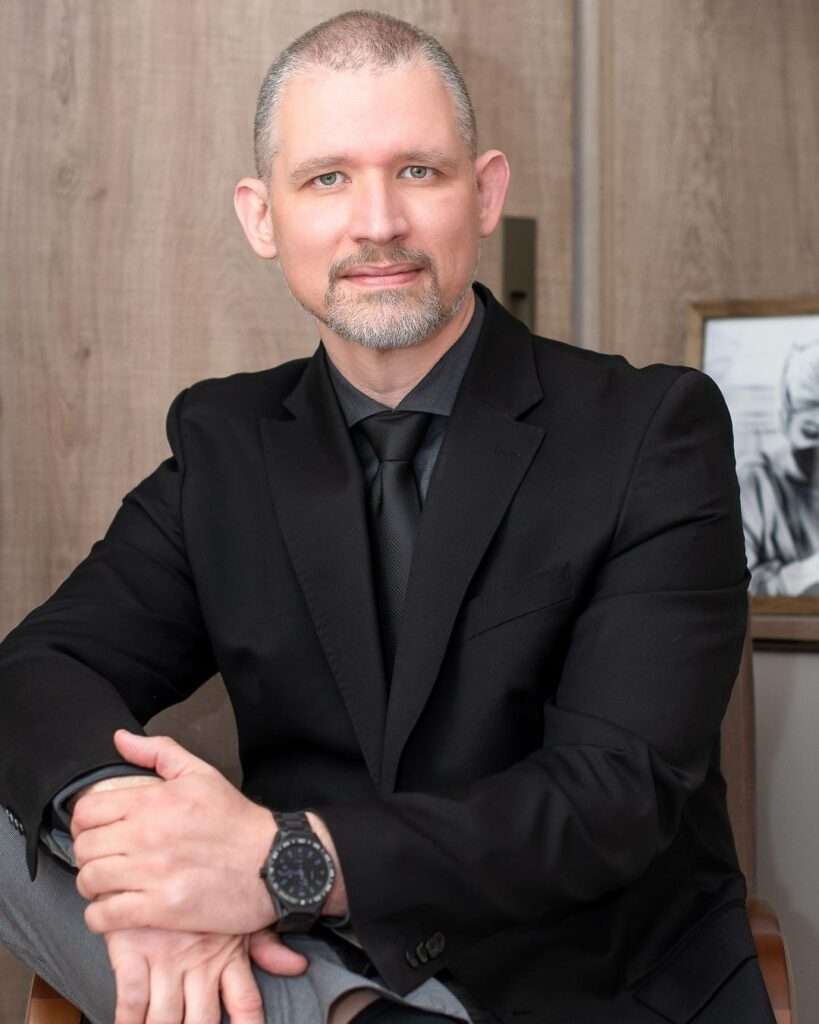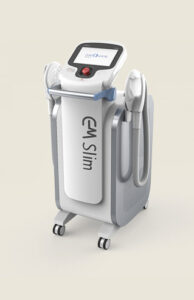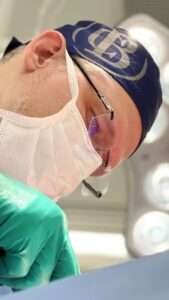

Calf prosthesis (patella)
Silicone for calf augmentation
The calf prosthesis is a surgical procedure designed to increase the volume of the calf area, known as the “potato of the leg”. The aim is to redesign the silhouette of the legs, making it both an aesthetic and functional option. The procedure involves the inclusion of an anatomically molded silicone implant to simulate the shape and firmness of the calf.
The calf prosthesis is indicated for individuals who wish to increase the volume of their legs, especially those with thin legs or who have suffered deformities such as polio sequelae, constitutional factors, asymmetries or changes in muscle development due to orthopaedic surgery in childhood. Both adult men and women in good health can consider this surgery.
Further information about the Calf Prosthesis
- Silicone implants do not cause cancer or any other disease.
- If changes occur in the calves after the prosthesis has been fitted, ultrasound, CT or MRI scans may be necessary to clarify the diagnosis.
- Purple spots (ecchymoses) may occur.
- It is recommended to sleep on your stomach for the first few nights.
- The recommended age is after growth has ceased (adolescence)
- The scar is almost imperceptible, located in the popliteal groove (a groove located in the back bend of the knee)
Pre-operative calf augmentation surgery
- 1. Obey the instructions given for admission
- 2. Report any abnormalities that may occur in their general condition.
- 3. INFORM YOUR SURGEON OF THE SLIGHTEST POSSIBILITY OF PREGNANCY. DO NOT STOP USING CONTRACEPTIVE METHODS.
- 4. Enter hospital fasting for at least 8 hours and do not bring valuables into the hospital.
- 5. Come accompanied to the hospital.
- 6. Avoid wearing earrings, rings, piercings, colored nail polish, etc. Any of these will be removed before surgery.
Calf augmentation surgery after surgery
- 1. avoid exertion for 30 days.
- 3. Get up as many times as recommended on discharge from hospital, observing the periods of sitting and avoiding maximum effort.
- 4. Do not expose yourself to the sun or cold for at least 14 days.
- 5. Obey the doctor's prescription.
- 6. Return to the office for subsequent dressings, on the days and at the times stipulated.
- 7. Don't worry about the intermediate forms in the various phases. Ask your surgeon any questions you may have.
- 8. Normal diet (except in special cases). We recommend a high-protein diet (meat, eggs, milk) as well as fruit.
Other body procedures
Before and After - Calf Prosthesis
Surgeries and procedures performed by Dr. Celso Boechat
Other Plastic Surgeries in Rio de Janeiro
From stunning beaches to vibrant aesthetics, discover the plastic surgeries that reflect Rio de Janeiro’s beautiful spirit and dynamic aesthetic standards.
Breast surgery
Raise your self-esteem, reaffirm your beauty.
Body Surgeries
Transformations for your ideal body.
Facial surgery
Facial renewal, bring out your true expression.
All about leg augmentation
Calf Prosthesis: The most asked questions about calf augmentation surgery
The surgery lasts approximately one hour and is performed under different types of anesthesia. The surgeon makes an incision at the back of the knee, detaches a space between the gastrocnemius muscle and the muscular fascia, and positions the implant in the subfascial plane. The scar is discreet, positioned behind the knee, giving natural results.
During the preoperative consultation, a specialist assesses the case individually, helping to choose the volume of the prosthesis in a personalized way. Photos can be made available so that the patient has a clearer idea of the expected results.
Yes, you can see the results as early as the first month after surgery. However, the definitive result is achieved after approximately 3 months, and it is important to understand that the scar can take up to 1 year to mature.
Yes, there are various types and models of calf implants, each with a precise indication depending on the type of leg the patient has. The ideal implant is chosen during the medical consultation, taking into account the clinical examination, photos and the patient’s expectations.
The size of the implant is limited by the patient’s anatomy, taking into account the firmness of the surrounding muscle or tissue. During the consultation, the plastic surgeon, in agreement with the patient, determines the best implant to produce a comfortable, natural and visually pleasing result, respecting the individuality of each person.
Possible risks of calf augmentation surgery
PANTERLIFT INCREASE SURGERY, like any other surgery, has risks and complications, some of which are specific to it and others which are generic to any type of surgery. These include:
Generic
1. Allergies: Some medications or products used during surgery can cause allergic reactions, which can even lead to death. Allergic reactions are patient-dependent and can occur either to medicines or products that the patient has never had contact with, or to those that they have had previous contact with, even if they didn’t have a previous reaction.
2. Infection: Our body is colonized by countless bacteria, with which, at first, we live in extreme harmony. However, after surgery, they can cause infection, requiring treatment with antibiotics and rarely re-operation. In the case of prostheses, the prosthesis may be lost, but can be reinserted once the process has healed.
3. Hematoma: Accumulation of blood in the operated area, from a vessel that was not bleeding at the end of the operation, but did so in the immediate post-operative period. It can be treated by aspiration with a syringe and needle or, rarely, re-operation may be necessary.


Book your appointment
Find out everything you need in one consultation


Appointment
Make an appointment and get your questions answered
Schedule an appointment with plastic surgeon Dr. Celso Boechat. Discover the path to aesthetic transformation and improved self-esteem. Our specialized team is ready to guide you through the procedure options, answering your questions and creating a personalized plan to suit your needs. Book your appointment now and take the first step towards a more confident and radiant version of yourself.
Send a message via WhatsApp
Service and consultations
Call Us
(21) 997336862
Opening hours
Monday to Friday - 09:00 - 21:00
Saturdays and Sundays - Closed, only for surgeries




